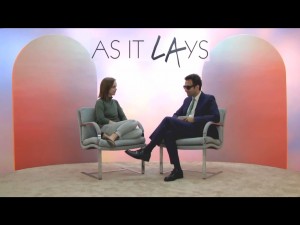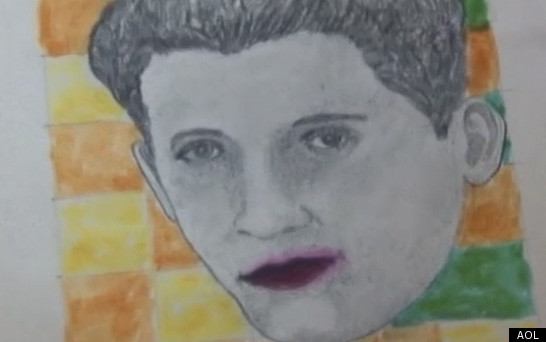With a Hemingwayesque build and the distinctively rounded vowels of his native Australia, Mr. Hughes became as familiar a presence on television as he was in print, over three decades for Time magazine, where he was chief art critic and often a traditionalist scourge during an era when art movements fractured into unrecognizability.
“The Shock of the New,” his eight-part documentary about the development of modernism from the Impressionists through Warhol, was seen by more than 25 million viewers when it ran first on BBC and then on PBS, and the book that Mr. Hughes spun off from it, described as a “stunning critical performance” by Louis Menand of The New Yorker, was hugely popular. In 1997, the writer Robert S. Boynton described him as “the most famous art critic in the world.”
It was decidedly not Mr. Hughes’s method to take prisoners. He was as damning about artists who fell short of his expectations as he was ecstatic about those who met them, and his prose seemed to reach only loftier heights when he was angry. As early as 1993, he described the work of Jeff Koons as “so overexposed that it loses nothing in reproduction and gains nothing in the original.”
“Koons is the baby to Andy Warhol’s Rosemary,” he summarized, adding: “He has done for narcissism what Michael Milken did for the junk bond.”
Of Warhol himself, the most influential artist of the last 40 years, he was not wholly dismissive — he once referred to him as “Genet in paint” — and he softened in his judgment over time. But he argued that Warhol had only a handful of good years and that his corrosive shadow over contemporary art ultimately did more harm than good. “The alienation of the artist, of which one heard so much talk a few years ago,” he wrote in 1975, “no longer exists for Warhol: his ideal society has crystallized round him and learned to love his entropy.”
About artists he admired, like Lucian Freud, he cast the stakes in nothing less than heroic terms. “Every inch of the surface has to be won,” he wrote of Freud’s canvases in The Guardian in 2004, “must be argued through, bears the traces of curiosity and inquisition — above all, takes nothing for granted and demands active engagement from the viewer as its right.”
“Nothing of this kind happens with Warhol, or Gilbert and George, or any of the other image-scavengers and recyclers who infest the wretchedly stylish woods of an already decayed, pulped-out postmodernism.”
“The Fatal Shore,” Mr. Hughes’s epic 1987 history of his homeland, Australia — which he left in 1964 and where his reputation seemed to seesaw between hero and traitor — became an international best seller.
And he continued to write prolifically and with ambitious range, on beloved subjects like Goya, Lucian Freud, fishing, the history of American art, the city of Barcelona — and himself — even after a near-fatal car crash in Australia in 1999 left him with numerous health problems. “Things I Didn’t Know,” a memoir, was published in 2006 and “Rome,” his highly personal history of the city he called “an enormous concretion of human glory and human error,” was published last year. In the memoir, Mr. Hughes was as poetically descriptive about his brush with death as he was about the art he loved: “At one point I saw Death. He was sitting at a desk, like a banker. He made no gesture, but he opened his mouth and I looked right down his throat, which distended to become a tunnel: the bocca d’inferno of old Christian art.”
Robert Studley Forrest Hughes was born July 28, 1938, in Sydney, into a family of successful lawyers. His father, Geoffrey Forrest Hughes, was a flying ace during World War I, who died when Robert was 12.
Mr. Hughes studied art and architecture at the University of Sydney and was associated with a group of leftist artists and writers that included Germaine Greer and Clive James, who described Mr. Hughes during those years as “the golden boy.” He pursued criticism mostly as a sideline while painting, writing poetry and serving as a cartoonist for the weekly intellectual journal The Observer.
After leaving Australia, he spent formative time in Italy before settling mostly in London. There, he quickly became a well-known critical voice, writing for several newspapers and diving into the glamorous hedonism of the ’60s London, an experience that confirmed him in a kind of counter-counterculturalism — not that he didn’t indulge himself during those years. As he related in his memoir, he was so under the influence of drugs when Time magazine called to offer him a job that he thought that it might be a trick by the C.I.A. (He wrote that he contracted gonorrhea from his first wife, Danne Patricia Emerson, who, he believed, had contracted it from Jimi Hendrix.)
With Ms. Emerson, who died in 2003, Mr. Hughes had a son, Danton, from whom he was estranged after he and Ms. Emerson divorced in 1981. Danton, a sculptor who lived outside of Sydney, killed himself in 2002, at the age of 34.
Besides his wife, a painter, Mr. Hughes is survived by two stepsons, Freeborn Garrettson Jewett IV and Fielder Douglas Jewett. He is also survived by his brothers, Thomas Hughes, a former attorney general of Australia, and Geoffrey Hughes, and by a sister, Constance Crisp, all of Sydney. His niece, Lucy Hughes Turnbull, was a former lord mayor of Sydney, and her husband, Malcolm Turnbull, is a member of the Australian House of Representatives.
Mr. Hughes lived for many years in New York in a loft in SoHo, whose blossoming art scene he often lampooned. In 1978 he was recruited to anchor the new ABC News magazine “20/20,” but the reviews of his first broadcast were so disastrous that he was quickly replaced by Hugh Downs.
In 1999, while in Australia working on a documentary about the country, he was driving on the wrong side of the road after a day of fishing and crashed head-on with another car carrying three men, one of whom was seriously injured.
Mr. Hughes was critically injured, spending weeks in a coma. He fought a charge of dangerous driving, and after a bitter and highly public legal battle, he described the men in the other car as “lowlife scum.” (He was fined and banned from driving in Australia for three years; his anger about it led to his saying in the hearing of a reporter that it would not matter to him if Australia were towed out to sea and sunk.)
The accident slowed him greatly and required him to walk with a cane, a harsh blow for the kind of writer who almost always seemed happier aboard a motorcycle or a fishing boat than behind a desk. But he continued to travel, to study deeply, to appear on television speaking in impromptu sentences almost as accomplished as those he wrote, and to write.
“No critic could have asked for a better run,” Christopher Hitchens wrote in a review of Mr. Hughes’s memoir.
Mr. Hughes’s essential motivating drive may have been expressed best in his own words about Goya, who he said haunted him in the months when he was recovering from the crash. He was an artist, he wrote, whose genius lay in his “vast breadth of curiosity about the human animal and the depth of his appalled sympathy for it.”
![[image]](http://si.wsj.net/public/resources/images/WK-BD115_FALL_A_DV_20120906231222.jpg)

![[image]](http://si.wsj.net/public/resources/images/MK-BW985_WARHOL_DV_20120905201119.jpg) Andy Warhol Foundation for the Visual Arts, Inc./Christies Images Ltd.
Andy Warhol Foundation for the Visual Arts, Inc./Christies Images Ltd. 
![[image]](http://si.wsj.net/public/resources/images/MK-BW984_WARHOL_DV_20120905201047.jpg) Andy Warhol Foundation for the Visual Arts, Inc./Christies Images Ltd.
Andy Warhol Foundation for the Visual Arts, Inc./Christies Images Ltd. 
![[image]](http://si.wsj.net/public/resources/images/PJ-BJ287_silenc_DV_20120827184727.jpg)








